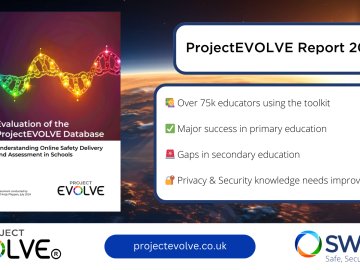When was the last time you checked your mobile?
Less than 30 minutes ago perhaps? Maybe you’re reading this on your mobile device, in which case no time at all.
...we check or use our smartphones on average every 12 minutes...
It is often said that we are ‘slaves’ to, or hooked on, our mobile phones. According to Ofcom’s most recent Communications Market Report (August 2018) we check or use our smartphones on average every 12 minutes while awake. The report also concluded that 40% of adults look at their phone within the first five minutes of waking up, increasing to 65% among under-35s. Even before going to sleep, 37% of adults check their phones five minutes before lights-out, again increasing to 60% among under-35s.
Persuasive Design
This is clearly no accident. Mobile phones and online technologies are inherently (and very cleverly) designed to keep us connected and engaged through ‘persuasive design’. Thankfully, many responsible providers are now sharing tools and information to help their users manage their time more healthily.
But what are the design elements that make our device so enticing?
Infinite scrolling
In the past, search responses were presented in pages, where you were required to click to the next one. On mobile devices there is no end to the page. Instead it has been replaced with endless scrolling.
A few years ago researchers in the United States compared the consumption of soup between participants using normal bowls compared to a self–refilling bowl. Without the usual visual prompts - i.e. the bowl getting empty - participants who were unknowingly eating from the self–refilling bowls ate 73% more soup that those eating from normal bowls.
The same can be said of infinite scrolling; without the reference points of having to load another page, users can become disorientated, which encourages further use.
Colours
Take a look at your mobile phone's home screen. Chances are it is awash with a kaleidoscope of colours. This isa critical aspect, specifically done to catch your eye's attention. A prime example is the new logo that Instagram introduced in 2016, moving away from a retro Polaroid style camera icon to a bold icon using purple, pink and orange.
What you can do:
Go into your phone's settings and consider changing your screen's colour settings monochrome.
Autoplay
We've all been there. Having watched the first episode in a box-set an on-demand player and it finishes on a cliff hanger. The temptation to keep watching and find out what happens next can be compelling. That's why the majority of on-demand players have a built-in ‘autoplay’ feature that assumes you’ll want to watch the next episode. One simply rolls into the next, and before you know it, hours have passed you by and you've binge-watched half of your new series.
What you can do:
Go into your account settings and disabled the auto-play feature. This way you have to actively select if you want to watch the next episode.
Pull to Refresh
Whether it's your email inbox or social media feed the action of ‘pull down to refresh’ is common place. But why is this so compelling?
Think about slot or fruit machines. You pull the lever, the reels spin, you wait with anticipation to see if you’ve won. This action, combined with the feelings of expectancy and reward have been likened to the feeling you get when you ‘pull down to refresh’ to reveal whether anyone has messaged you.
Notifications
Again take a look at your screen and the likelihood is that, if you have apps intalled, in the top corner there will be a red disc with a number indicating that you have messages or updates. The draw of this is extremely enticing. The use of the colour red is also no accident. Red is proven to attract our eyes, further enhancing the compulsion.
What you can do:
Consider the way you manage notifications in your device settings. Do you want people to have instant access to you or would you rather wait until you next go into the app?
Friend Suggestions
Users of social media or messaging services will be familiar with friend suggestions and notifications indicating that someone wants to connect with you. This is a powerful social driver and tempts us to find out who this is to create a further social connection.
Friend suggestions are equally influential in captivating our time; especially as the infinite list of people will invariably contain people we know. How does it know? Social media providers can make pretty accurate friend suggestions because of the sheer amount of information and data they have about us. Often this is right there in our profile, if not it's probably on our device: contact details, location, email, school, interests, employer, mutual friends, etc. The list goes on.
What you can do:
Always review the provider's privacy policy before you use it so that you know what data is being shared and where. It's also good practice to review the apps you have installed and delete any that you no longer use.
For many people the fact that mobile devices are designed to keep users enticed is no great surprise. But with technology playing a bigger role than ever in our day-to-day lives it's important to try to stay in control of how we use it. Being aware of how devices work and thinking about these tricks can help when it comes to keeping track of how we use them and how we manage their role in our lives.






